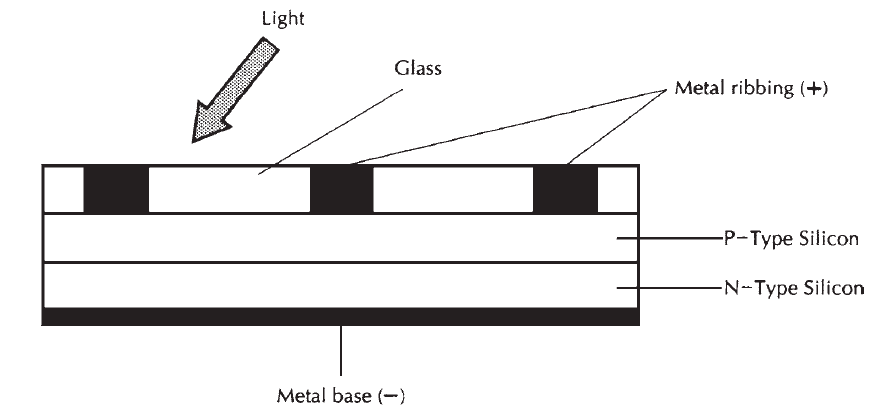


 الفيزياء الكلاسيكية
الفيزياء الكلاسيكية
 الكهربائية والمغناطيسية
الكهربائية والمغناطيسية
 علم البصريات
علم البصريات
 الفيزياء الحديثة
الفيزياء الحديثة
 النظرية النسبية
النظرية النسبية
 الفيزياء النووية
الفيزياء النووية
 فيزياء الحالة الصلبة
فيزياء الحالة الصلبة
 الليزر
الليزر
 علم الفلك
علم الفلك
 المجموعة الشمسية
المجموعة الشمسية
 الطاقة البديلة
الطاقة البديلة
 الفيزياء والعلوم الأخرى
الفيزياء والعلوم الأخرى
 مواضيع عامة في الفيزياء
مواضيع عامة في الفيزياء|
Read More
Date: 3-4-2021
Date: 28-4-2021
Date: 5-4-2021
|
How large of a battery?
You might get the idea that you can connect hundreds, or even thousands, of cells in series and obtain batteries with fantastically high EMFs. Why not put 1,000 zinc-carbon cells in series, for example, and get 1.5 kV? Or put 2,500 solar cells in series and get 1.25 kV? Maybe it’s possible to put a billion solar cells in series, out in some vast sun-scorched desert wasteland, and use the resulting 500 MV (megavolts) to feed the greatest high-tension power line the world has ever seen.

Fig 1: Cross-sectional view of silicon photovoltaic (solar) cell construction.
There are several reasons why these schemes aren’t good ideas. First, high voltages for practical purposes can be generated cheaply and efficiently by power converters that work from 117-V or 234-V utility mains. Second, it would be difficult to maintain a battery of thousands, millions or billions of cells in series. Imagine a cell holder with 1,000 sets of contacts. And not one of them can open up, lest the whole battery become useless, because all the cells must be in series. (Solar panels, at least, can be permanently wired together. Not so with batteries that must often be replaced.) And finally, the internal resistances of the cells would add up and limit the current, as well as the output voltage, that could be derived by connecting so many cells in series. This is not so much of a problem with series-parallel combinations, as in solar panels, as long as the voltages are reasonable. But it is a big factor if all the cells are in series, with the intent of getting a huge voltage. This effect will occur with any kind of cell, whether electrochemical or photovoltaic.
In the days of the Second World War, portable two-way radios were built using vacuum tubes. These were powered by batteries supplying 103.5 V. The batteries were several inches long and about an inch in diameter. They were made by stacking many little zinc-carbon cells on top of each other, and enclosing the whole assembly in a single case. You could get a nasty jolt from one of those things. They were downright dangerous! A fresh 103.5-V battery would light up a 15-W household incandescent bulb to almost full brilliance. But the 117-V outlet would work better, and for a lot longer.
Nowadays, handheld radio transceivers will work from NICAD battery packs or batteries of ordinary dry cells, providing 6 V, 9 V, or 12 V. Even the biggest power transistors rarely use higher voltages. Automotive or truck batteries can produce more than enough power for almost any mobile or portable communications system. And if a really substantial setup is desired, gasoline-powered generators are available, and they will supply the needed energy at far less cost than batteries. There’s just no use for a megabattery of a thousand, a million, or a zillion volts.



|
|
|
|
دراسة يابانية لتقليل مخاطر أمراض المواليد منخفضي الوزن
|
|
|
|
|
|
|
اكتشاف أكبر مرجان في العالم قبالة سواحل جزر سليمان
|
|
|
|
|
|
|
اتحاد كليات الطب الملكية البريطانية يشيد بالمستوى العلمي لطلبة جامعة العميد وبيئتها التعليمية
|
|
|